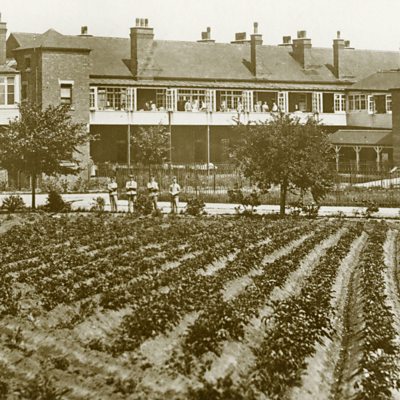Episode details

ÃÛÑ¿´«Ã½,4 mins
City Hospital, Nottingham: Parks and Public Spaces Become Makeshift Allotments
World War One At ÃÛÑ¿´«Ã½Available for over a year
As the war progressed Britain began to experience difficulties with its imported food supplies and so it started to look at other ways to keep the nation fed. In Nottingham many parks and public spaces were given over to growing crops, including the grounds of what was Bagthorpe Military Hospital but today is a busy Out-Patients Department at Nottingham City Hospital. By 1917 more than a hundred acres of unused land in Nottingham had been turned to food production; from playing fields on the Victoria Embankments to land ear-marked for building in Sherwood. At the same time an additional 1,200 allotment plots were brought in to use where families were encouraged to grow staple foods like potatoes, cabbage and sprouts. Civilian rationing was not introduced until the final year of the conflict although bread and potatoes were never included. Historians believe that despite the difficulties and shortages, the population in Britain was never in any serious danger of starving. Location: Nottingham City Hospital (formerly Bagthorpe Military Hospital), The Ropewalk, Nottingham NG5 1PB Image: The allotments at what was Bagthorpe Military Hospital, courtesy of PicturethePast. Presented by Jefferey Sheard, allotment holder and enthusiast, historian Dr Sally Horrocks and oral history voiced by Gertrude Lumby.
Programme Website